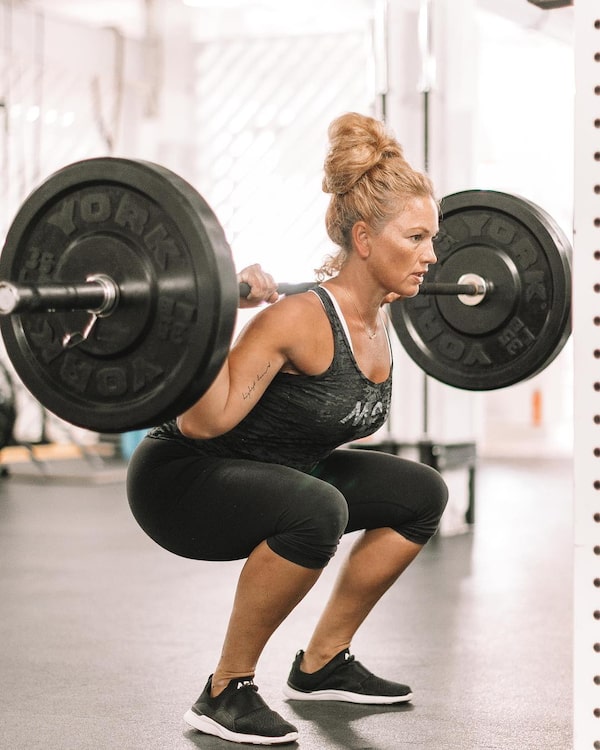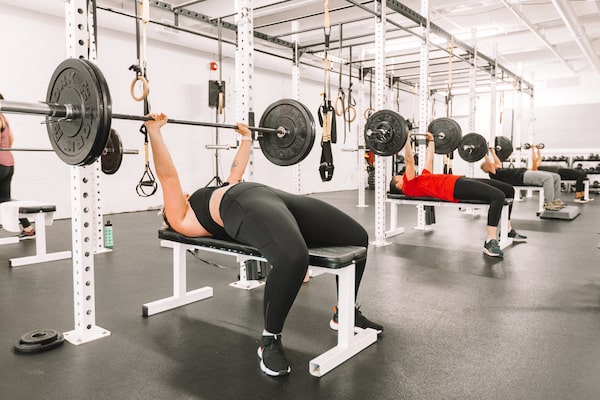
The ideal way to begin any strength training program is to work one-on-one with a qualified, certified trainer who has experience with clientele like you.MOVE Fitness Club/Supplied
The smell of sweat, the cacophony of crashing weights, the muscular people in tank tops who seem to know exactly where to go and what to do. Whether you’ve been lifting for nearly a decade as I have, or have never picked up a dumbbell, stepping into a group strength class or the weight room of a gym can be intimidating.
It’s worth pushing past that fear though: Most of the benefits of strength training have nothing to do with aesthetics. And it’s arguably even more important for women to engage in strength training.
Everyone should be lifting weights. Here’s why
“Females tend to lose muscle mass at an earlier age than males,” says health and movement coach Freyja Spence. That loss, known as sarcopenia, can lead to increased frailty, falls and bone fractures due to decreased bone density. Resistance training exposes our bones to pressure that exceeds what we would encounter in our normal daily activities, and can increase muscle mass and improve bone density.
So now that you know resistance training is important, here’s how to get started.
Find your function and set a goal
Forget focusing on sleeve-ripping biceps or washboard abs: Set a goal that is attainable and can improve your daily life. What aspect of your life might be made easier by being just a bit stronger?
That might mean walking with a kettlebell in one hand to mimic carrying your baby’s car seat, pressing weight overhead to ensure you can put your own bag in the airplane’s overhead bin or doing weighted squats to prepare for a hiking trip.
“If you can find the things that will resonate and link to your life, you tend to see the value of it sooner,” says Spence.
One-on-one attention
The ideal way to begin any strength training program is to work one-on-one with a qualified, certified trainer who has experience with clientele like you. Look for a trainer who asks about your injuries and experience, helps you set reasonable expectations for your time together, and creates a tailored program.
For Kelly Taphouse, founder of Toronto’s women-only strength-focused gym Move, that means starting each individual’s journey with a movement screen, in which they’re asked to complete a series of basic bodyweight movements that require mobility and stability (such as a squat, lunge and pushup). A trainer will analyze their movement patterns to “understand if they have any limitations or injuries,” Taphouse explains.
Look for gyms that allow you to alter standard workouts to your existing fitness level, with instructors who offer modifications.MOVE Fitness Club/Supplied
Small group training
Private training with friends or joining a gym that offers small group classes is also a cost-effective way to get individual attention. Look for gyms that allow you to alter standard workouts to your existing fitness level, with instructors who offer modifications. While you might feel inclined (as I often do) to position yourself in the back corner of the room, Taphouse suggests heading to the front where a coach can keep a close eye on your form and offer feedback. I promise, no one else is looking at you.
Taphouse recommends that those who are brand new to lifting begin with bodyweight movements before adding any additional weight. The first thing you need to learn is “mastering movement of your own body,” she says.
Take videos. You don’t have to post them
If you prefer to use a strength-training app instead of training in-person, look for ones that include video demonstrations. Then – and this is key – take videos of yourself performing those movements as well and watch them between sets. “Everybody has the capacity to get to know their bodies super, super well, and video is one of the ways in which you can do that,” says Spence. Videos allow you to observe whether your body is moving the same way as the instructor in your app and make changes to avoid injury (and no, you don’t have to post them to social media).
Start at the start
If none of those are appealing, consider starting at home with bodyweight movements like squats, lunges and modified pushups. When you’re ready to progress, use household items to add a challenge, like holding a gallon water jug to your chest and performing a goblet squat (a movement Spence says can also help teach you to stabilize your core muscles). In terms of equipment, adding resistance bands is a great next (and low-cost) step because “they provide a really gentle resistance” and allow you to more acutely sense joint movement, muscle exertion, and level of effort, says Taphouse.

Research suggests that even 60 minutes of strength training a week can have a major impact when it comes to longevity.MOVE Fitness Club/Supplied
The great news is you don’t have to commit to a series of “legs days” or “chest days” to reap the benefits of strength training: Research suggests that even 60 minutes of strength training a week can have a major impact when it comes to longevity.
However you begin your strength training journey, stick with it. When you do, you’ll begin to see an impact far beyond your jeans fitting better, such as the ability to do more, tackle daily tasks more easily and improve your overall health.
Alyssa Ages is a journalist and the author of Secrets of Giants: A Journey to Uncover the True Meaning of Strength, published by Avery/Penguin Random House in September, 2023. She is also a strongman competitor and endurance athlete, as well as a former personal trainer and group fitness instructor.